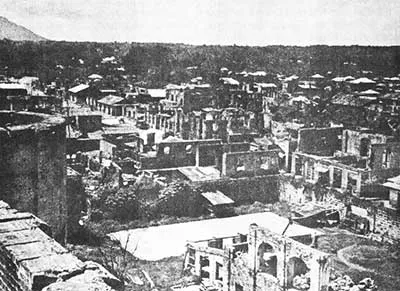Life in the Province of Batangas Right after World War II
Before the onset of World War II in the Pacific in late 1941, Batangas was one of the most bustling provinces in the country in terms of commerce and industry. World War II and the Japanese occupation changed that. The invading army forced themselves into local households, seizing food and belongings.
Particularly towards the end of the war when the Americans marched into Luzon, the Japanese engaged in drunken orgies of killing, in total wasting the lives of an estimated 25,000 Batangueños. The fighting caused the destruction of roads and bridges as well as telephone and telegraph lines.
Sto. Tomas, Tanauan, Malvar, Lipa, San Jose, Lipa, Lemery, Rosario, Batangas, Bauan, Cuenca, Alitagtag and San Luis were totally devastated, along with industries located in these municipalities. Economic activity dwindled almost to a standstill also due to the dearth of manpower. Those among the province’s men who survived the Japanese massacre mostly preferred to work in the military where the remuneration was better.
After the conclusion of the war, the Commonwealth Government set about the task of rebuilding the country, including the heavily devastated Province of Batangas. With the assistance of the United States Army’s engineering corps, roads, bridges, public offices and communication lines were rebuilt.
Financial aid was extended to owners of commercial and industrial companies, albeit production was stunted by the chronic shortage of manpower in the aftermath of the war. Consequently, the prices of produce skyrocketed. Prices started to tumble upon the flooding in 1946 of the market with goods imported from the United States.
To put these “inflated” prices in context, however, I cite stories of pre-war economics I used to hear from my own parents. Then, or so I used to hear, ¢5 had real worth. My parents used to say how such a meager amount – at least by present day standards – was more than sufficient for a meal. One could purchase a cup of rice for ¢1, one viand for another ¢2, soft drink for ¢1 and, if one wanted dessert, perhaps boiled plantain for the final ¢1. In the present day, of course, ¢5 has become next to worthless.
Batangas’ population in 1947 was placed at 504,900 people. Contrast this to the 2,694,335 population figure reported after the 2015 Philippine National Census, which is 5.3 times as much as the 1947 population of the province.1
The average daily compensation rate for agricultural workers in the province in 1947 was ₱3.88. In contrast to 2016 figures, the average minimum wage for agricultural workers in areas considered as growth corridors in Batangas is ₱267.00 for non-planting industries and ₱290.50 for planting jobs. For commercial laborers, the average daily compensation in 1947 was ₱3.27. For industrial laborers, the rate was ₱4.32. In contrast, the 2016 daily minimum wage rate for non-agricultural workers in growth corridor areas in Batangas is pegged at ₱310.00.2
Gradually, people turned to the land and home-based industries as their primary sources of income. Embroidery, sinamay weaving and livestock raising became major preoccupations. Batangueños raised cattle, carabaos, horses, hogs, goats, sheep, chicken, duck, geese and even turkeys. Among the major crops were rice, sugarcane, Mandarin oranges, mangoes, coffee, bananas and cassava.
A college degree was not as universal as it has almost become in the present day. In 1946, there were only 4 registered architects in the entire province, 15 certified public accountants, 23 chemical engineers, 23 civil engineers, 95 dentists, 5 electrical engineers, 9 mechanical engineers, 1 mining engineer, 38 nurses and 138 pharmacists. In contrast, as of January 2016, 237,265 Batangueños possess academic degrees.3
1946 figures showed that horse-drawn transportation was still basically the primary way of moving about, particularly within each municipality. There were a mere 514 registered automobiles in Batangas, along with 1,194 registered trucks and just 4 motorcycles. In contrast, there were 1,107 calesas and 403 carretelas.
For entertainment, there were 22 registered show houses or theaters in the province, at least one in each municipality excepting Batangas and Lipa where there were four each. These days, of course, at SM City in Lipa alone, there are already 4 moviehouses.
2 Department of Labor National Wages and Productivity Commission web site.
3 Batangas Fact Sheet, online at the Philippine Statistics Authority web site.
4 All other information in this article from “The 1948 Batangas Provincial Directory,” Emilio Ynciong, Ed.

